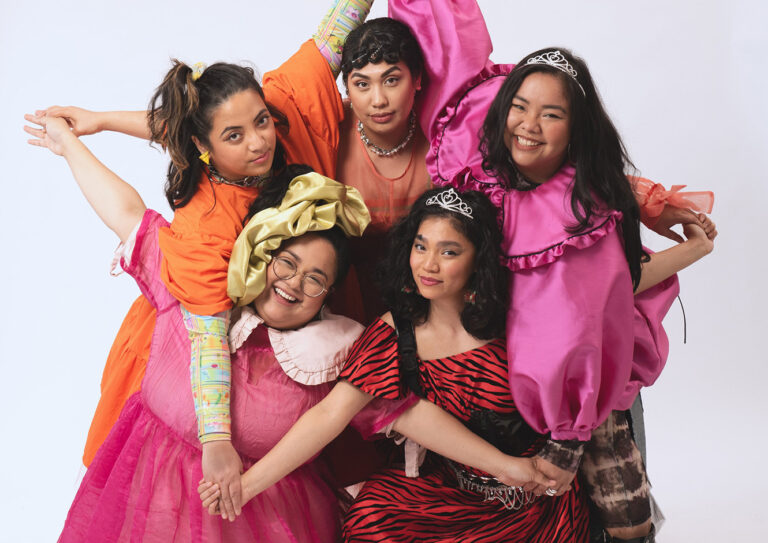One of the dresses featured in the exhibition came out of a promise two women made to each other when they were in high school—for one to someday sew the dress of the other’s daughter.
“Nobody puts these dresses together in any hurried fashion,” says Dewhurst. “There is so much detail and love put into them … some of them are made with home-tanned moose that, in some cases, takes a whole year to process. There’s different fur on some of them, so that depends on the trapping season.”
The aesthetics are stunning, says Jensen. She encourages audiences to appreciate the skilled beadwork, tufting, tanning, sewing and planning that goes into each design. Then she asks audiences to think about what that design means—what each piece of regalia stands for.
“I think about our struggles in high school, not just passing a class, but the struggle of identity and living in two worlds,” she says. “As Indigenous people, we yearn to practice things on the land, to be with Elders. We put a lot on hold to be able to succeed. The regalia exemplifies the sacrifice and the hard emotional and spiritual alongside the academic work.”
It has taken resilience, she says, for Yukon First Nations to get to the place they are now, where they’re able to celebrate themselves in this way.
“It’s overwhelmingly emotional,” she says. “You feel an extreme, immense sense of love for who you are. It’s a day to celebrate and your identity is heightened when you put on your regalia.”
The exhibit includes regalia from all Yukon First Nations, with the exception of the Ross River Dena Council and the Little Salmon Carmacks First Nation. Dewhurst, who called for submissions on social media and via interviews on CBC radio, says she’d love to include late contributions from those communities, as the exhibition is slated to tour the Yukon once its run finishes at KDCC.







